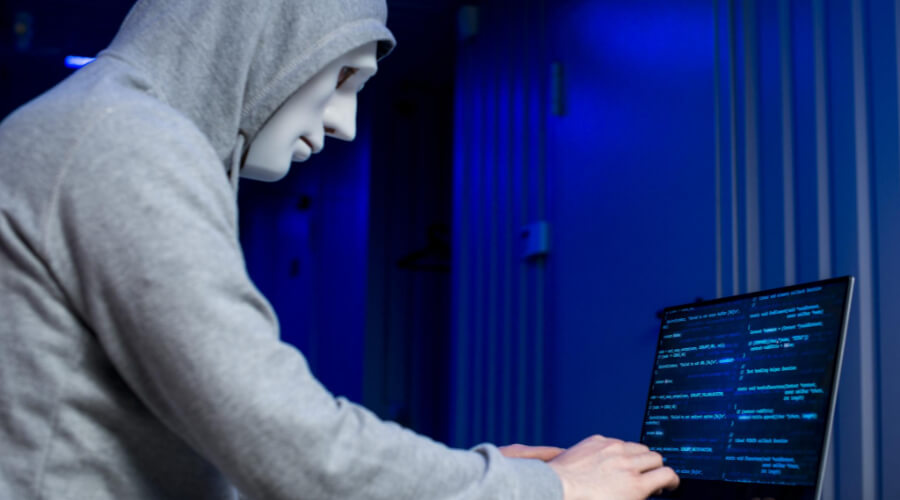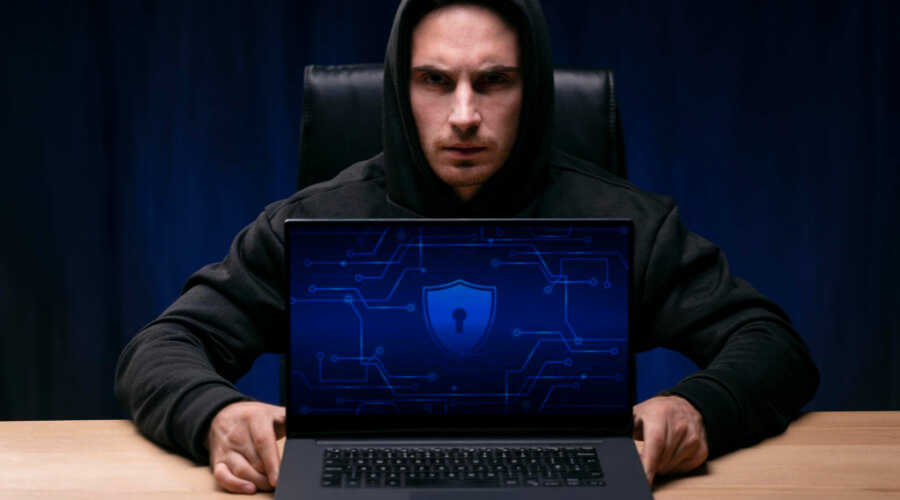Hackers may use methods like password cracking or exploiting vulnerabilities to access devices on your WiFi. Stay safe by using strong, unique passwords, enabling WPA3 encryption, updating router firmware, and regularly checking connected devices for unfamiliar entries.
10 Tips to Secure your Wi-Fi against hackers
1. Change the Default Name and Password of Your Wi-Fi Router
Most routers come with a default username and password set by the manufacturer. Hackers often have access to these default credentials. Therefore, it is critical to change these default settings to improve security.
2. Use a Strong and Unique Password
To enhance protection, create a complex password that combines numbers, special characters, and both upper and lowercase letters. A unique password is harder for hackers to guess or crack.
3. Enable Network Encryption
Modern Wi-Fi routers provide different encryption standards like WPA2 or WPA3. Ensure that your Wi-Fi network has enabled an encryption protocol to secure the data transmitted through the network from prying eyes.
4. Disable Remote Management
Remote management allows changes to your router’s settings from outside your home network. By disabling this feature, you limit the access points that potential hackers can exploit.
5. Regularly Update Your Router Firmware
Manufacturers regularly update router firmware to fix security holes that could be exploited by hackers. Regularly updating your router’s firmware ensures you have the most current security patches.
6. Limit Wi-Fi Range
You can limit the reach of your wireless signal by adjusting your router’s mode or power level if it supports it. This limits the potential hackers who can access your Wi-Fi network to those physically close enough to receive the signal.
7. Enable Firewalls
Ensure that your router’s built-in firewall is enabled. A firewall acts as a barrier, examining incoming and outgoing traffic and blocking suspicious activities.
8. Set Up a Guest Network
By setting up a separate guest network for visitors, you can prevent unauthorized access to your main network where your sensitive information might be stored.
9. Monitor Connected Devices
Regularly check the list of devices connected to your network. If you notice any unfamiliar device, take immediate action as a foreign device can be a hacker.
10. Disable Wi-Fi Protected Setup (WPS)
WPS was developed to make connecting devices easier but it has known vulnerabilities. Therefore, disabling it makes your network less susceptible to attacks.
How to Ensure Your Wi-Fi is Blocking Hackers
Securing your Wi-Fi is crucial to prevent unauthorized access by hackers. Follow these comprehensive steps to ensure your Wi-Fi network is robustly protected:
- Strong Passwords: Set a strong, unique password for your Wi-Fi network. Avoid common words and include a mix of upper and lowercase letters, numbers, and symbols.
- Encryption Protocols: Use the latest encryption protocol, such as WPA3. Encryption scrambles data, making it difficult for hackers to decipher even if they manage to intercept it.
- Firmware Updates: Regularly update your router’s firmware. Manufacturers release updates to address security vulnerabilities, so keeping the firmware current is essential for a secure network.
- Firewall Configuration: Enable the built-in firewall on your router and configure it to filter incoming and outgoing traffic. This adds an extra layer of defense against unauthorized access.
- Network Segmentation: Create a separate guest network to isolate devices and limit access to sensitive information. This prevents guests from directly accessing your main network.
- MAC Address Filtering: Allow only specific devices to connect by filtering MAC addresses. This restricts access to known and approved devices.
- Intrusion Detection/Prevention Systems (IDS/IPS): Implement IDS/IPS tools to detect and prevent suspicious activities. These systems monitor network traffic for unusual patterns and take action to protect against potential threats.
- Disable Remote Management: Turn off remote access to your router’s administration interface to prevent unauthorized users from altering settings.
- Regular Audits: Periodically review the list of connected devices and router logs for any anomalies. Remove unfamiliar devices and investigate unexpected activities promptly.
- VPN Usage: Consider using a Virtual Private Network (VPN) for an additional layer of security. A VPN encrypts your internet connection, making it more difficult for hackers to intercept your data.
5 Ways Hackers Use Public Wi-Fi To Steal Your Identity

1. Man-In-The-Middle Attacks
A Man-in-the-Middle attack is a cyberattack in which a third party, the MITM, intercepts communications between two participants. The word “man” in the middle of MITM has nothing to do with the gender of the person who is carrying out this attack. It is used in lieu of “middle” because it is often employed between two people.
A MITM attack is a cyberattack whereby a third party intercepts communications between two participants. Instead of data being shared directly between server and client, it is relayed to the attacker before passing it on to the other party. This allows them to read, modify, delete or block data before it is sent on to the recipient.
2. Beware Of Fake Wi-Fi Connections!
What are you doing on that public Wi-Fi network? Don’t be deceived by the sense of convenience, because there are many risks associated with public Wi-Fi. Hackers can easily set up fake Wi-Fi connections to lure unsuspecting victims into logging in to fake sites. This gives away your username and password, which allows hackers to steal your sensitive information like credit card numbers and banking information.
Public Wi-Fi is fast, reliable, and free. It’s also the most unsafe kind of Wi-Fi you’ll ever connect to. That’s because public Wi-Fi connections are more likely to have flaws in their security protections, which are easier for hackers to exploit. This makes it easy for hackers to steal your data or commit crimes like identity theft (which can ruin your credit) without you even knowing it.
3. How To Prevent Packet Sniffing
The practice of packet sniffing is a quick and easy way for hackers to steal your identity or get their hands on your confidential data. Packet sniffing is the act of intercepting and reading information transmitted over a wireless network, and many public Wi-Fi networks make it easy for hackers to do so. Hackers can easily use packet sniffing to steal credit card numbers, passwords, or other sensitive data from unsuspecting victims.
Hackers use public Wi-Fi to steal your identity by taking data packets off the air. The hacker will set up their laptop in a public place, like an airport or coffee shop, and wait for you to connect to the public Wi-Fi. Once you do, they’ll steal your usernames and passwords, access your private data, and even capture your credit card information.
4. Seajacking
Public Wi-Fi networks are just about everywhere nowadays, and they can be accessed anywhere in the world, which is convenient for many people. With that convenience also comes risk. Hackers can sometimes use public Wi-Fi to steal your identity by seajacking. Seajacking is when hackers spoof websites in order to gain access to personal information like passwords, bank account numbers, and other sensitive data.
A term used to describe the act of hacking into a public Wi-Fi network and using it to steal information from people who use that connection. Seajacking takes advantage of the fact that public Wi-Fi networks are often unencrypted, meaning any information sent to and from an individual’s device (including passwords) is easily visible.
5. Shoulder-Surfing
Shoulder-surfing, or eavesdropping on someone’s computer screen, can happen when your computer is in public places. It’s also a danger when it comes to public Wi-Fi. If someone is hovering around when you’re visiting private sites, be suspicious. There are ways that this type of hacking can be prevented. You can put a sticker over your screen or use a privacy filter.
10 Ways To Stay Safe From Hackers

1. Change Your Passwords Frequently
2. Don’t Share Personal Information
3. Install Antivirus Software
4. Install Firewall Software
5. Keep Your Operating System Up-To-Date
6. Enable Safe Browsing Settings
1. Change Your Passwords Frequently
Hackers are always finding new ways to access your personal information, so it is important to change your passwords every few months. These hackers can be sneaky and use things like keyloggers, which is a type of software that records everything you type on the computer. Changing your password often will help protect you from hackers trying to steal your data.
You should also make sure that you do not use the same passwords for different accounts.
2. Don’t Share Personal Information
Hackers can be very cunning and sly. They will steal your personal information and use it for their own needs. The best way to protect yourself is by avoiding sharing any personal information on social media or anywhere else online. It’s also important to know that if someone calls you claiming to be from your bank, they are most likely trying to scam you. Don’t give out any personal information over the phone, even if they claim it is necessary for security purposes or some other reason.
3. Install Antivirus Software
Every day, people’s personal data is stolen by hackers, and it is important to be on guard against them. Hackers can break into your email account, social media pages, or bank account – or they can even gain access to your computer or phone through the internet.
Users should install antivirus software on their devices to protect themselves.
4. Install Firewall Software
It is important for all people to take precautions when they are on the internet. When somebody visits a website, they could be at risk of having their computer attacked by hackers who want to steal their personal information. One way to avoid this is by installing firewalls, which will make it difficult for hackers to gain access to your device. There are different types of firewalls, but one of the most popular ones is Windows Defender.
5. Keep Your Operating System Up-To-Date
With more and more people using the internet for everyday tasks, there are many opportunities for hackers to invade your computer system. One of the best ways to protect yourself is to make sure you’re always running on the latest software or patches available for your operating system. This ensures that any security holes your system might have had will be fixed. Other ways include never clicking on links in emails, avoiding opening attachments from unknown senders, and being cautious about what you share online.
6. Enable Safe Browsing Settings
To stay safe from hackers, it is important to enabling safe browsing settings. When surfing the internet on your laptop, tablet, or phone, you should always do so with built-in security features enabled. These include things like Flash, JavaScript, and cookies. You can also use anti-virus for your device if you are using a Windows PC.
Conclusion :
Hackers are so eager to obtain your wireless passwords that they will go to any lengths to obtain them. The only way to stay safe is to set up a strong password and never use the same password for two different accounts. Never use a password containing a piece of personal information like your birthday, your anniversary, or your pet’s name. If you’re reading this article, you may already know this but you might not know how to successfully change your Wi-Fi password.
References:
https://www.loginradius.com/blog/growth/secure-your-wi-fi-against-hackers/
https://www.pcmag.com/how-to/protect-your-smart-home-from-hackers
Hello, I’m Herman C. Miller, the founder of InternetPKG.com, your ultimate destination for all things Mobile Internet and Telecommunication Services. With a BSc in Telecommunication Services and over 6 years at AT&T, my passion for the industry led to this platform. At InternetPKG.com, we prioritize keeping you informed with the latest package offers, ensuring our content stays current. Our team, including a dedicated Internet Package and Mobile Data Plans Researcher, tirelessly researches emerging trends, identifies market opportunities, and provides expert product recommendations.
